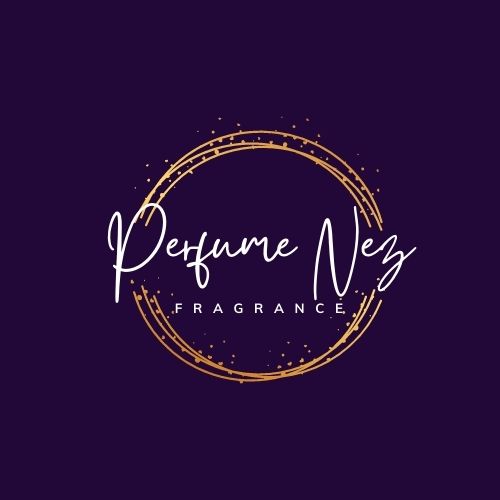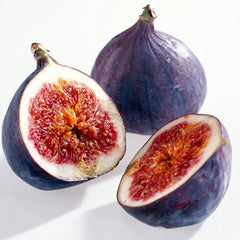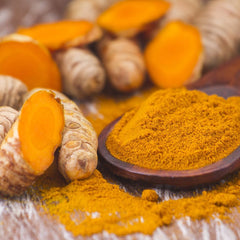What Does Incense Smell Like?
As An Amazon Associate We Earn From Qualifying Purchases At No Extra Cost To You

Embark on a fragrant journey to ancient rituals and spiritual sanctuaries as we explore the question: What does incense smell like? The scent of incense, often associated with religious ceremonies, meditation, and calming environments, is a rich and diverse olfactory experience that transcends cultural boundaries.
The Mystique of Incense
Aromatic Elevation: Sacred and Soothing Picture a spiritual sanctuary where the air is filled with the ethereal and calming aroma of incense. The fragrance is an aromatic elevation, a sensory journey that transcends the ordinary. Whether in a temple, church, mosque, or personal meditation space, the scent of incense is synonymous with a sacred and soothing atmosphere.
Woody Warmth: Earthly and Timeless The primary notes of incense often carry a woody warmth. Picture the resinous essence of fragrant woods, such as frankincense and myrrh, intertwining with the earthy undertones of cedar or sandalwood. This woody symphony creates a timeless and grounding olfactory experience, connecting the present moment with ancient traditions.
Resinous Richness: Amber and Balsamic Bliss Incense often features a resinous richness that adds depth and complexity to its scent profile. Notes of amber, benzoin, and balsamic resins contribute to a blissful and enveloping fragrance. This resinous aspect enhances the overall warmth and creates a sense of sacred indulgence.
Herbal Harmony: Lavender and Sage In some varieties of incense, herbal notes like lavender and sage may be present, adding a harmonious touch to the overall bouquet. These herbal nuances bring a crisp and refreshing quality to the incense, balancing the resinous and woody elements with a hint of botanical brightness.
Factors Influencing the Scent of Incense
Variety of Resins and Herbs: The specific resins and herbs used in the incense blend contribute to the overall fragrance. Frankincense, myrrh, copal, and various botanicals each bring their unique scent, influencing the character of the incense.
Cultural and Religious Traditions: Different cultures and religious practices have distinct preferences for incense varieties. The type of incense used in a specific tradition can be influenced by historical, cultural, and religious factors, shaping the aroma in unique ways.
Blending Techniques: The art of incense-making involves skillful blending of various aromatic components. Master incense crafters carefully combine resins, woods, and herbs to achieve a harmonious and spiritually evocative fragrance.
Geographical Origins: The geographical origin of the incense ingredients can impact the scent. Incense varieties from different regions may exhibit subtle differences due to variations in soil, climate, and cultivation practices.
Synthetic vs. Natural Components: While traditional incense often utilizes natural resins and botanicals, modern variations may incorporate synthetic components for cost-effectiveness and consistency. The choice between natural and synthetic ingredients can influence the authenticity and complexity of the incense scent.
Combustion Method: Whether the incense is in the form of sticks, cones, or resins burned on charcoal can affect the way the fragrance unfolds. The combustion method influences the rate at which different aromatic compounds are released into the air.
What to Look for When Choosing Incense
Resin Quality: High-quality resins contribute to a more authentic and potent incense fragrance. Look for varieties that explicitly mention the use of premium resins like frankincense and myrrh.
Herbal Blend: If herbal notes are appealing, explore incense blends that incorporate botanicals like lavender, sage, or chamomile. The herbal elements can add a fresh and invigorating dimension to the overall scent.
Cultural Significance: Consider the cultural or religious significance of specific incense varieties. Exploring incense associated with different traditions can deepen the connection to spiritual practices.
Sustainability: Opt for incense brands that prioritize sustainable and ethical sourcing practices. This ensures that the ingredients are harvested responsibly, contributing to environmental conservation and fair trade.
Personal Preference: Ultimately, choosing incense is a personal journey. Experiment with different varieties to discover scents that resonate with your preferences and enhance your spiritual or meditative experiences.
Aroma Intensity: Incense comes in a range of aroma intensities. Some may prefer a subtle and mellow fragrance, while others may seek a more robust and lingering scent. Consider the intensity level that aligns with your preferences.
Artisanal vs. Commercial: Artisanal incense crafted by skilled practitioners often emphasizes quality and unique blends. Commercial options may offer convenience but could vary in terms of authenticity and fragrance complexity.
Where to Find Reputable Incense
-
Specialty Spiritual or Metaphysical Shops: Stores dedicated to spiritual and metaphysical supplies often carry a diverse selection of incense varieties catering to different traditions.
-
Ethnic or Cultural Stores: Explore stores that specialize in products from specific cultural or ethnic backgrounds. These establishments may offer authentic incense varieties tied to particular traditions.
-
Online Specialty Retailers: Reputable online platforms focusing on spiritual and wellness products may provide a wide range of incense options. Read customer reviews to gauge the authenticity and quality of the offerings.
-
Local Artisan Markets: Attend artisan markets or craft fairs where independent sellers showcase handmade products. Artisanal incense crafters may offer unique and carefully crafted blends.
-
Temples, Churches, or Spiritual Centers: Some religious or spiritual institutions sell incense as part of their offerings. Purchasing from these sources can support the practices and traditions associated with the incense.
-
Aromatherapy Shops: Stores specializing in aromatherapy and essential oils may carry a selection of high-quality incense. Inquire about their range of scents and blends.
-
Yoga Studios and Wellness Centers: Establishments focused on yoga and holistic wellness often stock various types of incense to enhance the overall atmosphere.
-
Natural Health Stores: Check natural health stores that prioritize holistic and wellness products. They may carry a curated selection of incense with an emphasis on natural ingredients.
-
Cultural Festivals and Events: Attend cultural festivals or events celebrating diverse traditions. Some vendors may offer unique and authentic incense varieties.
-
Word of Mouth: Seek recommendations from friends, family, or members of spiritual communities for trusted sources of incense. Personal experiences and suggestions can guide you to reputable suppliers known for quality and authenticity.
20 Questions and Answers about Incense:
-
What is incense in the context of perfumery?
- Incense in perfumery refers to aromatic materials, often in the form of resins, woods, or herbs, that are burned to release fragrant smoke. It has been used for centuries in religious ceremonies, rituals, and as a base note in perfumes.
-
How is incense made for perfumery?
- Incense for perfumery is typically made by combining various aromatic ingredients, such as resins, gums, essential oils, and herbs. These ingredients are mixed to create a fragrant blend, which is then shaped into cones, sticks, or other forms for burning.
-
What are some common types of incense used in perfumery?
- Common types of incense used in perfumery include frankincense, myrrh, oud (agarwood), benzoin, copal, and sandalwood. Each type contributes unique aromatic qualities to a perfume.
-
How does incense contribute to the overall fragrance of a perfume?
- Incense serves as a base note in perfumery, providing depth and longevity to a fragrance. Its rich and complex aromas can add warmth, sensuality, and a spiritual or meditative quality to a perfume.
-
Can incense be the primary note in a perfume?
- Yes, some perfumes are centered around incense as the primary note. These fragrances are often sought after for their exotic and contemplative qualities.
-
What is the significance of using incense in religious or spiritual contexts?
- Incense has been used in religious and spiritual practices for centuries. It is believed to symbolize purification, prayers, and the connection between the earthly and spiritual realms.
-
How does incense vary in different cultures and traditions?
- Different cultures use various types of incense based on their traditions and available natural resources. For example, Japanese incense often includes aloeswood, while Middle Eastern incense frequently features oud and resinous materials.
-
Can incense be allergenic in perfumery?
- While some individuals may be sensitive to certain aromatic compounds, incense itself is not commonly known to be allergenic. However, people with respiratory issues may be affected by the smoke produced when burning incense.
-
Is synthetic incense used in perfumery?
- Yes, synthetic materials are often used to recreate the aroma of natural incense in perfumery. This allows perfumers to achieve consistency in fragrance and work with materials that might be endangered or difficult to obtain.
-
How is incense used in niche perfumery?
- Niche perfumers often use high-quality and unique incense materials to create distinctive fragrances that stand out from mainstream offerings. These perfumes may explore unconventional combinations and interpretations of incense.
-
Does incense have therapeutic properties in perfumery?
- Incense is sometimes associated with therapeutic properties, such as relaxation and stress relief. Fragrances containing incense notes are often used in aromatherapy for their calming effects.
-
What are some classic perfumes that prominently feature incense?
- "Avignon" by Comme des Garçons, "Kyoto" by Maison Martin Margiela, and "Encens Flamboyant" by Annick Goutal are examples of classic perfumes known for their prominent use of incense.
-
Can incense be blended with other fragrance families?
- Yes, incense blends well with various fragrance families. It can be combined with floral, woody, spicy, or oriental notes to create complex and harmonious perfumes.
-
Is there a preferred method for burning incense to appreciate its fragrance?
- The method of burning incense can vary, but using specialized incense burners or holders designed to release the fragrance evenly is a common practice. It's important to follow safety precautions when burning incense.
-
How does incense contribute to the cultural identity of a fragrance?
- Incense often carries cultural and historical significance. When used in perfumery, it can evoke a sense of tradition, spirituality, or exoticism, contributing to the cultural identity of a fragrance.
-
What role does incense play in modern perfumery trends?
- In modern perfumery, incense is often used to add a touch of mystique and depth to fragrances. Its versatility allows perfumers to create a wide range of scents, from traditional to avant-garde.
-
Can incense be sustainable in perfumery?
- Sustainable sourcing of incense ingredients is a growing concern in the fragrance industry. Efforts are being made to ensure the responsible harvesting of natural materials and the development of eco-friendly alternatives.
-
Are there regional preferences for specific types of incense in perfumery?
- Yes, regional preferences play a role in the choice of incense ingredients. For example, Middle Eastern perfumery often emphasizes oud, while Asian perfumery may feature ingredients like sandalwood or agarwood.
-
How does the quality of incense impact the overall perfume composition?
- The quality of incense significantly influences the overall perfume composition. High-quality incense materials contribute richness, complexity, and authenticity to a fragrance, elevating its olfactory profile.
-
Are there any emerging trends or innovations related to incense in perfumery?
- Emerging trends may involve the use of innovative extraction methods, sustainable practices, and the exploration of new incense materials. Perfumers are continually pushing boundaries to create unique and memorable fragrances.
Buy Perfumes - Best Online Retailers
Click For Affordable Inspired Perfume Alternatives
Click For The Best Niche Perfumes & Decants
Pheromone Perfumes - Confidence, Attraction & Appeal - Click For More
Home Fragrances & Candle Warmers - Click To Scent Up Your Spaces Today!



